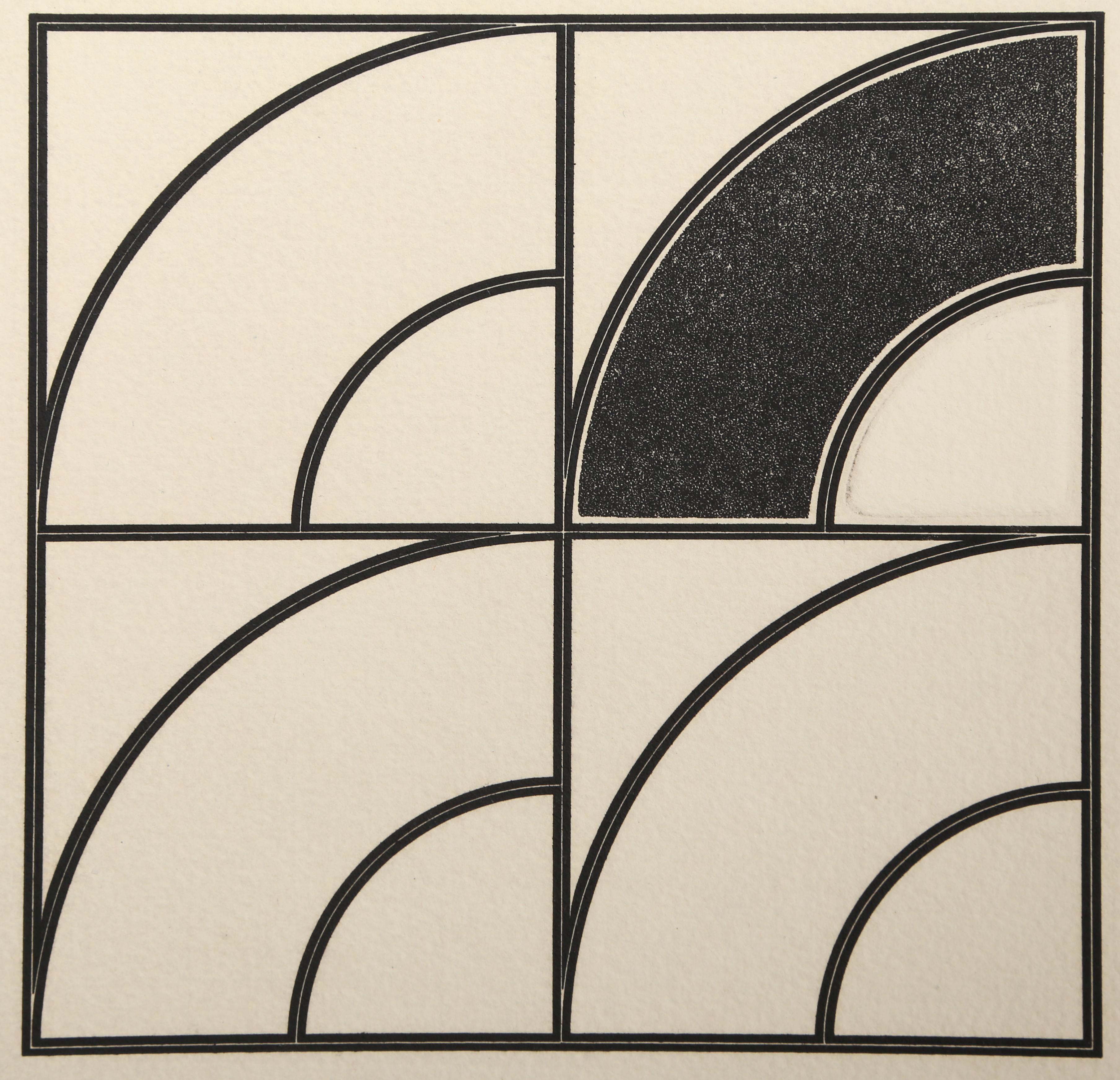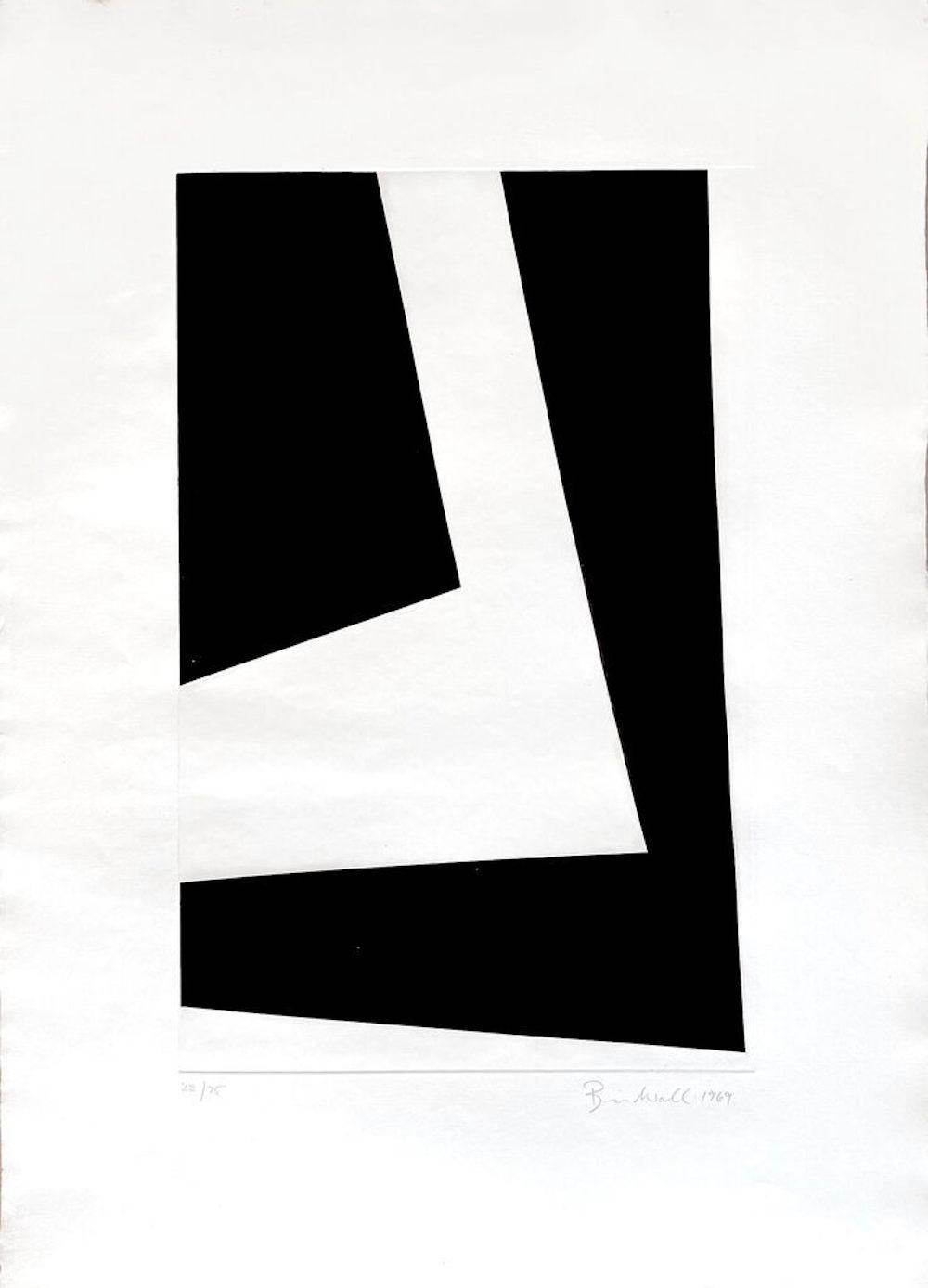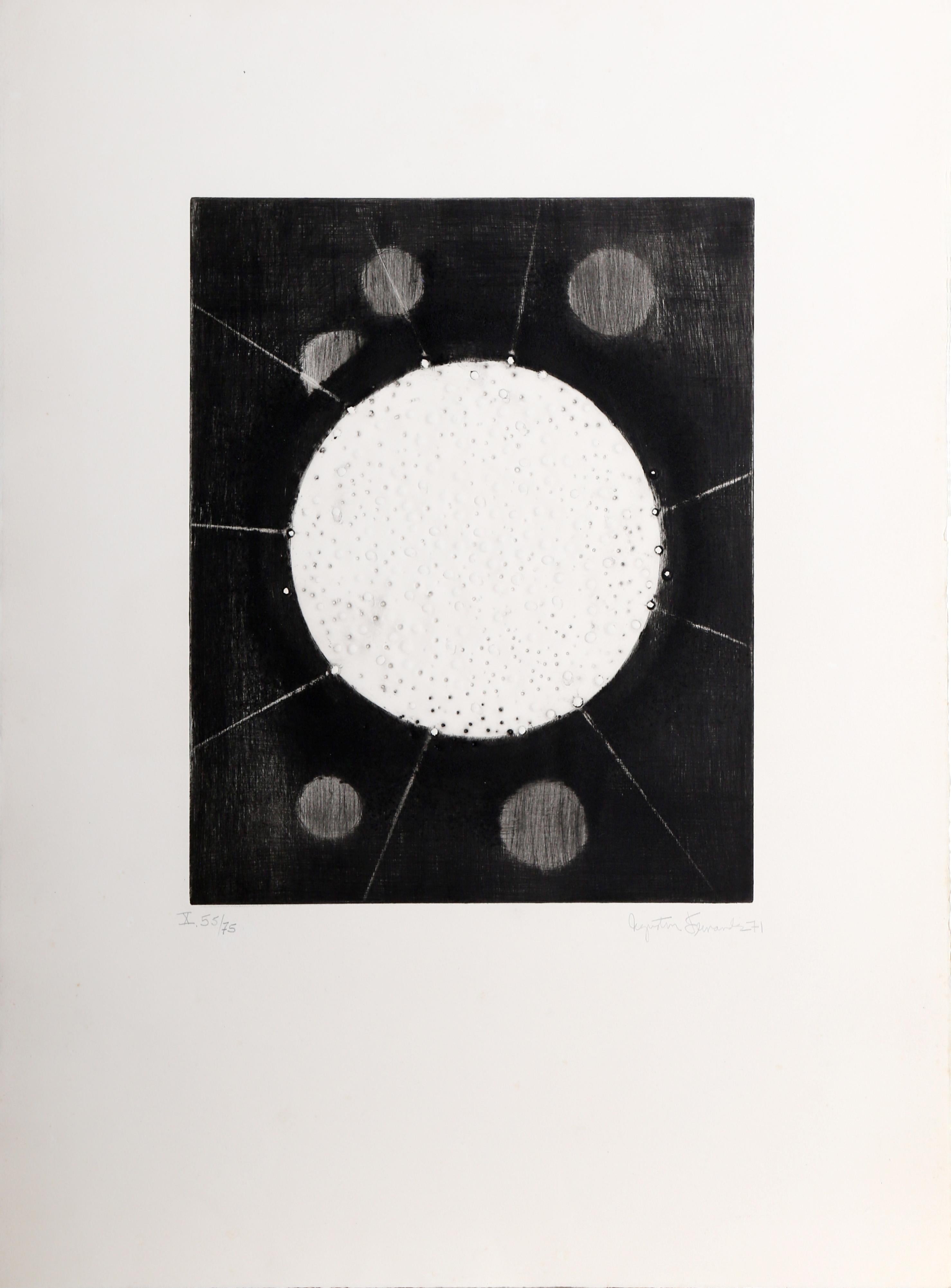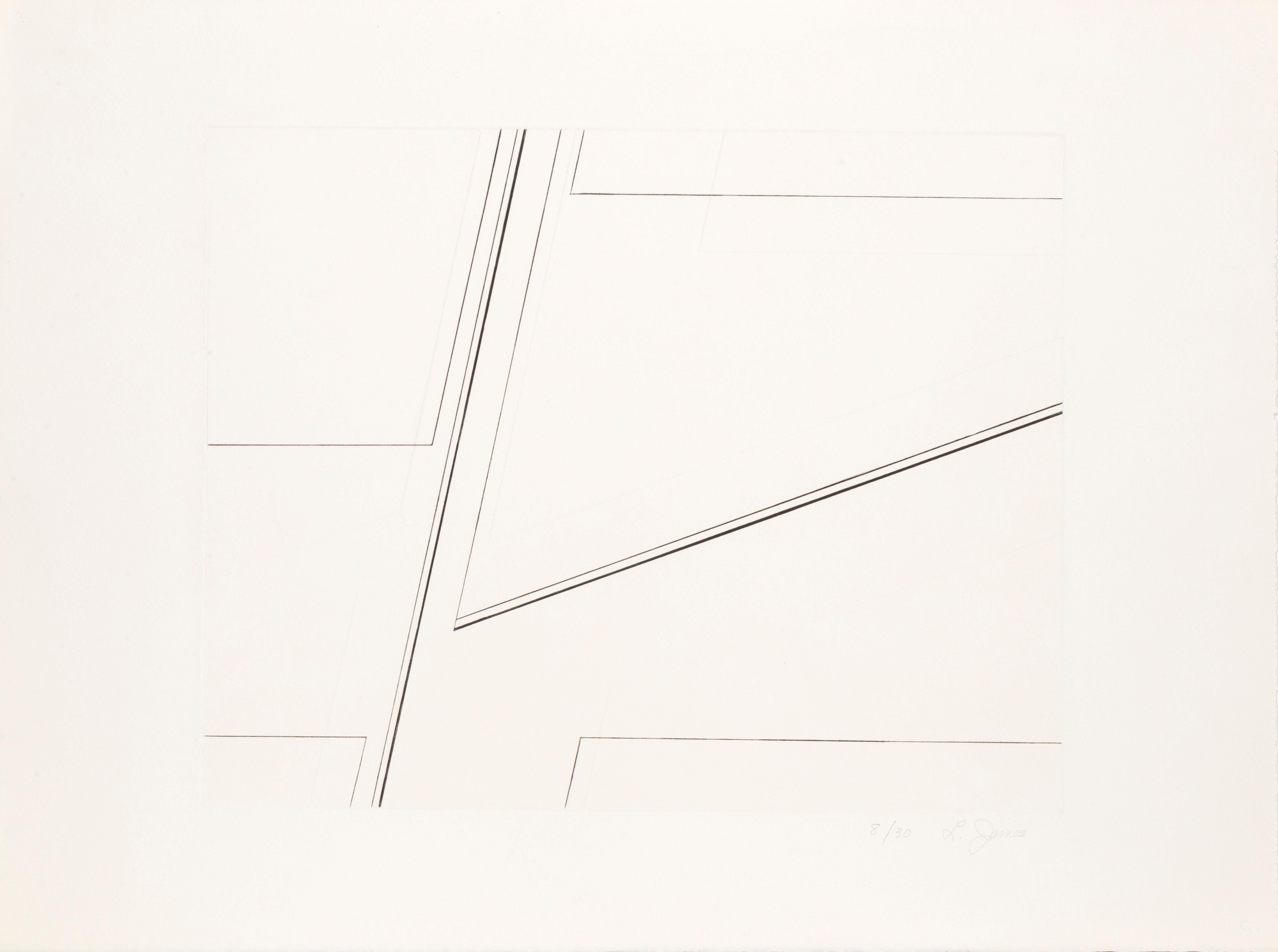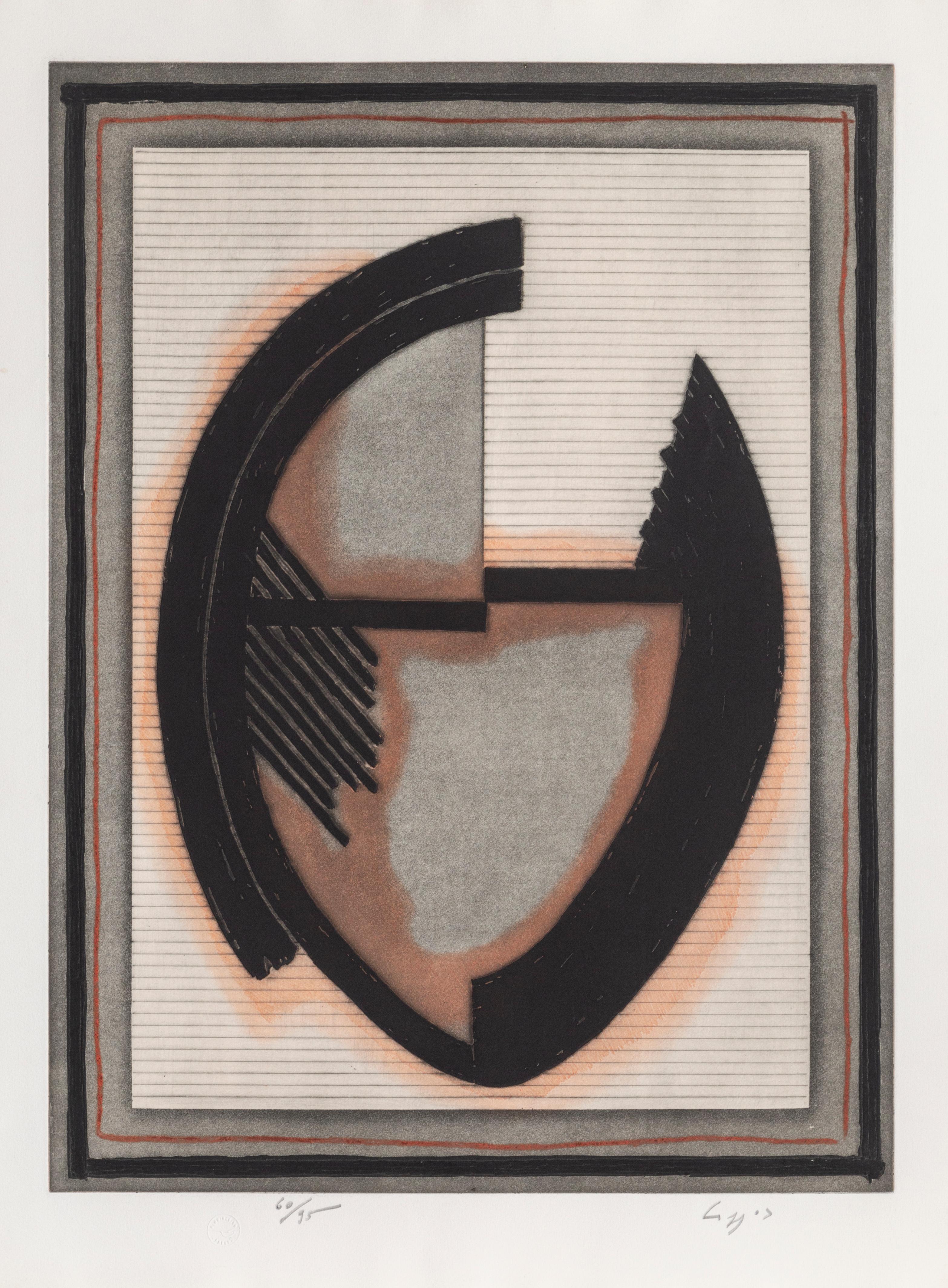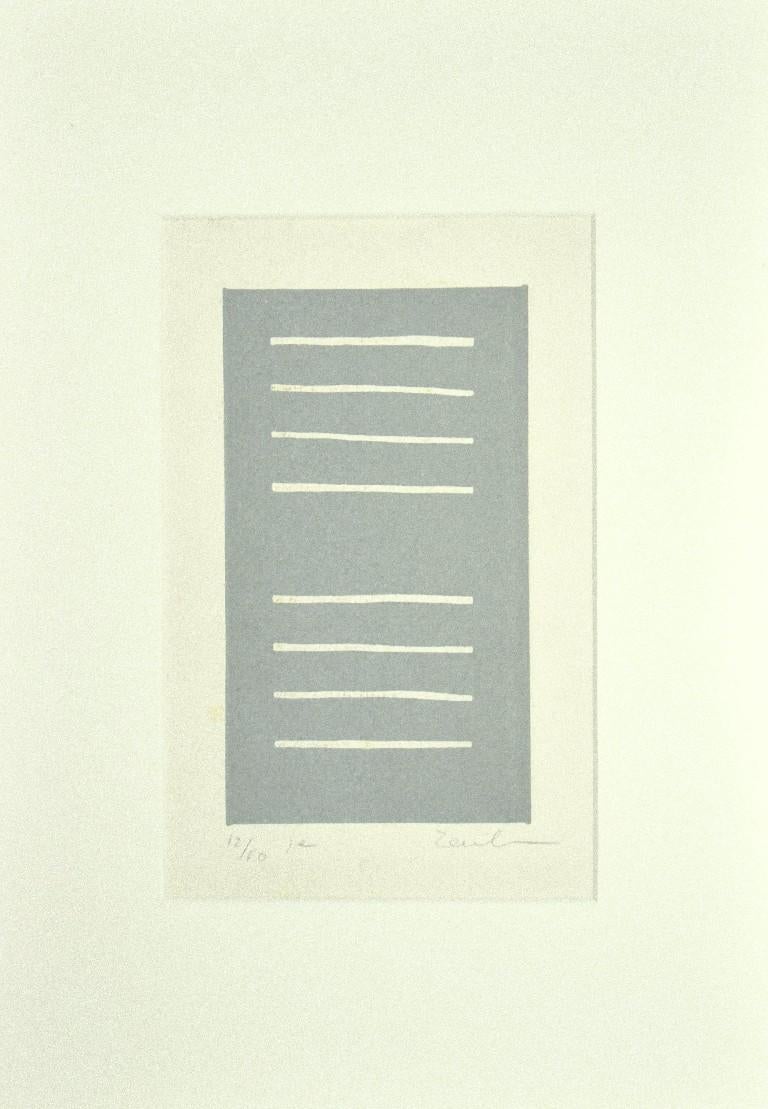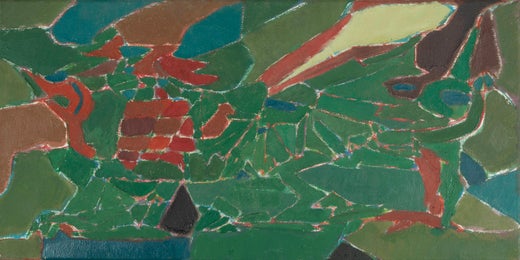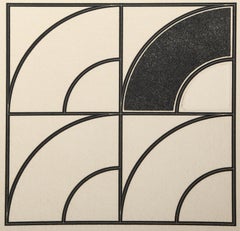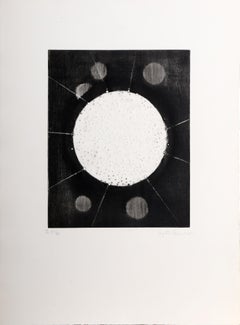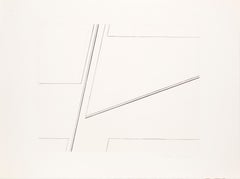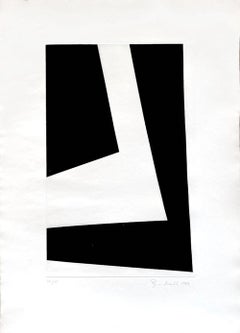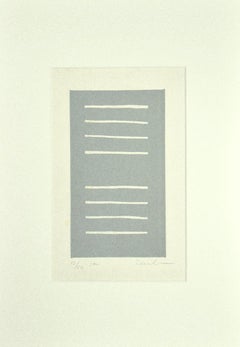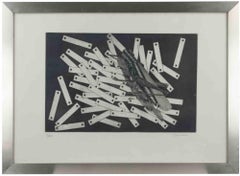Items Similar to Common Event, Minimalist Etching by Gordon House 1970
Want more images or videos?
Request additional images or videos from the seller
1 of 9
Gordon HouseCommon Event, Minimalist Etching by Gordon House 19701970
1970
$1,250
£936.07
€1,079.38
CA$1,756.93
A$1,919.44
CHF 1,006.93
MX$23,352.38
NOK 12,526.69
SEK 11,860.66
DKK 8,057.78
About the Item
This print was created by Welsh artist Gordon House (1932-2004). House was a designer and painter whose hard-edged abstract works reflected the dramatic tensions of his graphic design. The etching is signed and numbered from an edition of 16/40, and it measures 24 x 17 inches (image 9.5 x 10 inches).
- Creator:Gordon House (1932, British)
- Creation Year:1970
- Dimensions:Height: 24 in (60.96 cm)Width: 17 in (43.18 cm)
- Medium:
- Movement & Style:
- Period:
- Framing:Framing Options Available
- Condition:
- Gallery Location:Long Island City, NY
- Reference Number:1stDibs: LU4666361922
Gordon House
The Guardian wrote of Gordon House, upon his death in 2004: Many of the works made during his last years by the painter and graphic designer Gordon House, who has died aged 71, referred back to his birthplace in the Swansea valley. He spent his earliest years in the steel town of Pontardawe. In Tin-pan Valley, the memoir he published earlier this year, he recalled "the clamour of steel mills ... the tinplate works and pithead gear" and "dynamite blasting as coal seams were struck higher up the valley". Unemployment and the depression of the 1930s led Gordon's parents to take him from the valleys of south Wales to the order and designed coherence of Letchworth, "Hertfordshire's first garden city". After leaving school at 14, he went to study, first, at Luton School of Art. For a while after that, he worked in a hospital, before, with the aid of a scholarship, moving on to St Albans School of Art. By 1961, Gordon had become established among a new generation of artists as an independently minded and adventurous painter and designer. The previous year, he had shown his large, bold, hard-edged canvasses at the important London "Situation" exhibition of large-scale abstract painting, and had designed the catalogue for that exhibition. As the 1960s moved on, Gordon designed for the pop world. He worked for the Beatles, designing their White album and the back of the Sergeant Pepper album, for which his longtime friend Peter Blake designed the front. Later, he designed Wings' first album. He delighted in the creative energy of others, and so could respond to the talents of musicians and artists alike. Gordon made paintings throughout his life as a designer. During the 1960s and 70s, his canvasses and prints reflected the dramatic tensions of his graphic design; by the 1980s, Wales had become his constant subject matter. The surface, texture and colour of his paintings softened. No doubt, he needed to pay homage to the places and the people who had shaped him, just as he always paid homage to the artists for whom he designed. His canvasses reduced in size, becoming palm-of-the-hand landscapes. He spent much time in Wales and, in his final years, he used his brush to walk a path through memories of collieries, valleys, smoking stacks, rows of cottages and the people who had first nurtured him.
About the Seller
4.9
Platinum Seller
Premium sellers with a 4.7+ rating and 24-hour response times
Established in 1979
1stDibs seller since 2014
3,107 sales on 1stDibs
Typical response time: 1 hour
- ShippingRetrieving quote...Shipping from: Long Island City, NY
- Return Policy
Authenticity Guarantee
In the unlikely event there’s an issue with an item’s authenticity, contact us within 1 year for a full refund. DetailsMoney-Back Guarantee
If your item is not as described, is damaged in transit, or does not arrive, contact us within 7 days for a full refund. Details24-Hour Cancellation
You have a 24-hour grace period in which to reconsider your purchase, with no questions asked.Vetted Professional Sellers
Our world-class sellers must adhere to strict standards for service and quality, maintaining the integrity of our listings.Price-Match Guarantee
If you find that a seller listed the same item for a lower price elsewhere, we’ll match it.Trusted Global Delivery
Our best-in-class carrier network provides specialized shipping options worldwide, including custom delivery.More From This Seller
View AllEmbossed Quarter Arc, Minimalist Geometric Abstract Etching by Gordon House 1970
By Gordon House
Located in Long Island City, NY
This print was created by Welsh artist Gordon House (1932-2004). House was a designer and painter whose hard-edged abstract works reflected the dramatic tensions of his graphic desig...
Category
1970s Minimalist Abstract Prints
Materials
Etching
Minimalist Etching by Agustin Fernandez
By Agustín Fernández
Located in Long Island City, NY
Artist: Agustin Fernandez, Cuban (1928 - 2006)
Title: untitled (Moon)
Year: 1971
Medium: Etching, signed and numbered in pencil
Edition: 55/75
Image:...
Category
1970s Minimalist Abstract Prints
Materials
Etching, Intaglio
Untiled from the A.I.R. Women's Portfolio, Minimalist Etching by Laurace James
Located in Long Island City, NY
Produced for an A.I.R. portfolio in 1975, the portfolio was funded by the National Endowment for the Arts.
Artist: Laurace James, American (1936 - )
Title: Untitled from the A.I.R...
Category
1970s Minimalist Abstract Prints
Materials
Etching
Situation #2, Abstract Minimalist Etching by Shlomo Cassos
Located in Long Island City, NY
Situation #2
Shlomo Cassos, Moroccan (1936)
Date: circa 1980
Etching, signed and numbered in pencil
Edition of 60/95
Image Size: 26 x 19 inches
Size: 30 ...
Category
1980s Minimalist Abstract Prints
Materials
Etching
Tan and Brown Composition, Minimalist Lithograph by Lennart Nystrom
By Lennart Nyström
Located in Long Island City, NY
Artist: Lennart Nyström, Swedish (1944 - )
Tan and Brown Composition
circa 1980
Lithograph, signed and numbered in pencil
Edition of 13/150
Size: 25.5 ...
Category
1970s Minimalist Abstract Prints
Materials
Lithograph
untitled 4 Minimalist Abstract Silkscreen 1969 by Michael Argov
By Michael Argov
Located in Long Island City, NY
Artist: Michael Argov, Austrian/Israeli (1920 - 1982)
Title: untitled 4
Year: 1970
Medium: Serigraph, signed and numbered in pencil
Edition: 46
Size: 20 in. x 27.5 in. (50.8 cm x 69...
Category
1960s Abstract Geometric Abstract Prints
Materials
Screen
You May Also Like
Hard Edge Minimalist Etching (Geometric Abstraction) from the 1960s SIgned/N
Located in New York, NY
Brian Wall
Untitled Hard Edge Minimalist Etching (Geometric Abstraction) from the 1960s, 1969
Etching on wove paper with deckled edges
Hand signed and numbered 22/75 by the artist in...
Category
1960s Hard-Edge Abstract Prints
Materials
Etching
Composition - Original Etching on Paper - 1970
Located in Roma, IT
Composition is an original etching artwork on paper realized in 1970 ca. by an unknown artist of the mid-20th Century..
Hand-signed in pencil on the lower right, illegible. Numbere...
Category
1970s Abstract Figurative Prints
Materials
Etching
Untitled - Etching by Aldo Turchiaro - 1970s
By Aldo Turchiaro
Located in Roma, IT
Untitled is a modern artwork realized by Aldo Turchiaro.
Black and white etching.
Hand signed and numbered on the lower margin.
Edition of IV/XXV
Includes frame.
Category
1970s Contemporary Abstract Prints
Materials
Etching
Untitled - Antonio Corpora - 1970s - Etching - Contemporary
By Antonio Corpora
Located in Roma, IT
Hand signed and numbered. Edition of 35 prints. With an embossing stamp on the lower left margin. Excellent conditions.
Antonio Corpora (Tunis, 1909 - Rome, 2004) was an Italian art...
Category
1970s Contemporary Abstract Prints
Materials
Etching
Fred Sandback, Untitled (1979.03): Signed Lithograph, Abstract Print, Minimalism
By Fred Sandback
Located in Hamburg, DE
Fred Sandback, (1943-2003)
Untitled, 1979
Medium: Lithograph on Japanese paper
Dimensions: 35.9 x 35.9 cm
Edition of 35: Hand-signed, numbered and dated in pencil
Publisher: Edition ...
Category
20th Century Abstract Abstract Prints
Materials
Lithograph
Composition - Etching by Edo Janich - 1970s
By Edo Janich
Located in Roma, IT
Composition is an etching realized in the 1970s Century and attribute to Edo Janich.
Good conditions.
Edition of 110.
Hand-signed.
The artwork is repres...
Category
1970s Abstract Abstract Prints
Materials
Etching
Read More
Romare Bearden’s Humanity Infuses His Bright, Bold Art
Through collage, painting and printmaking, the artist foregrounded Black life in America in revolutionary new ways.
Chryssa’s 1962 Neon Sculpture Was Way ahead of the Art-World Curve
By working with lettering, neon and Pop imagery, Chryssa pioneered several postmodern themes at a time when most male artists detested commercial mediums.
